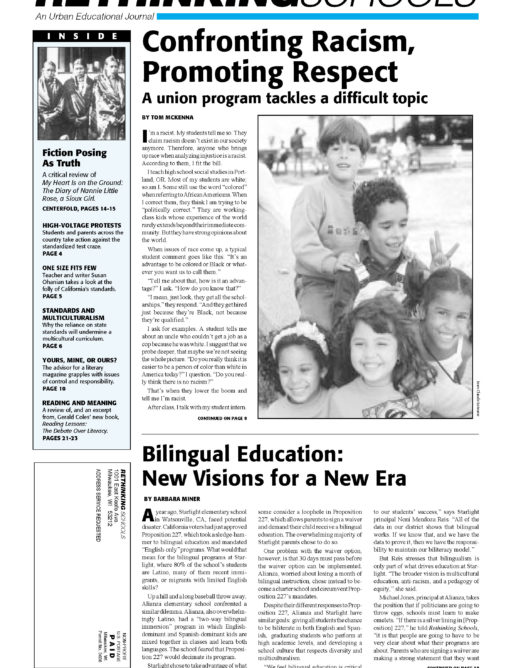Preview of Article:
Eyewitness Accounts
Teachers who want to gain a deeper understanding of the boarding school experience and its impact on families and culture, the following books provide an accurate and complete picture of life at boarding schools, from the atrocities to the forms of resistance.
My Name is Seepeetza, Shirley Sterling (Douglas & McIntyre, 1997).
Daughter of Suqua, Diane Johnston Hamm (Albert Whitman, 1997).
“Mush-hole,” Memories of a Residential School, Maddie Harper (Sister Vision Press, 1993).
The Middle Five: Indian Schoolboys of the Omaha Tribe, Francis LaFlesche (Omaha) (University of Nebraska Press, 1900/1978).</p

